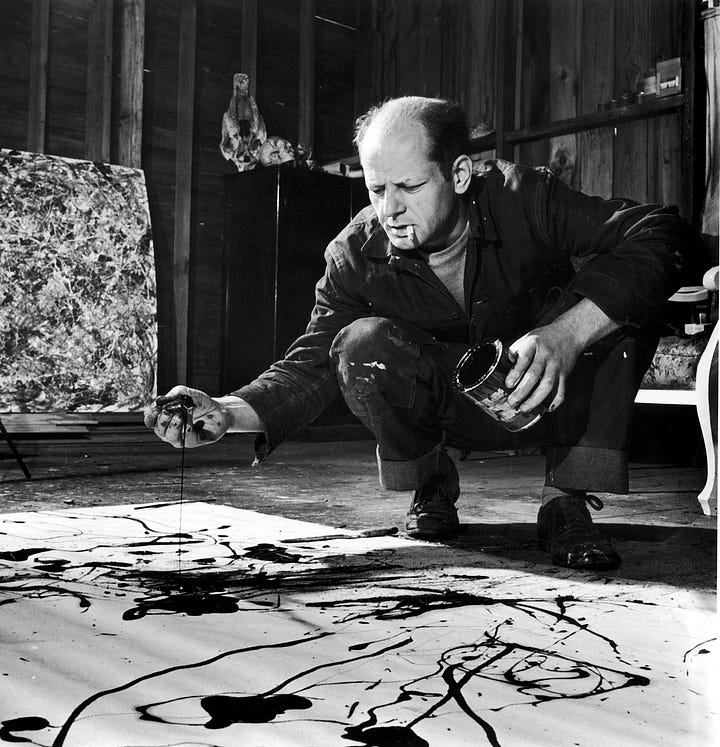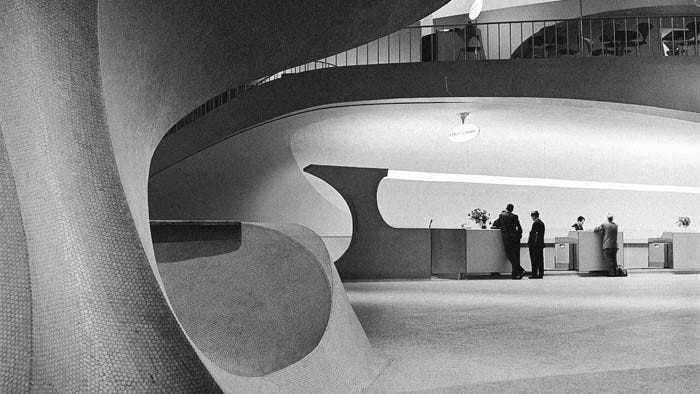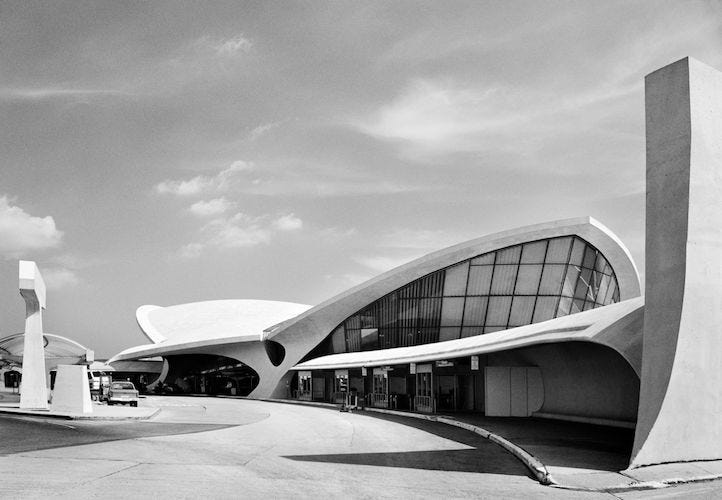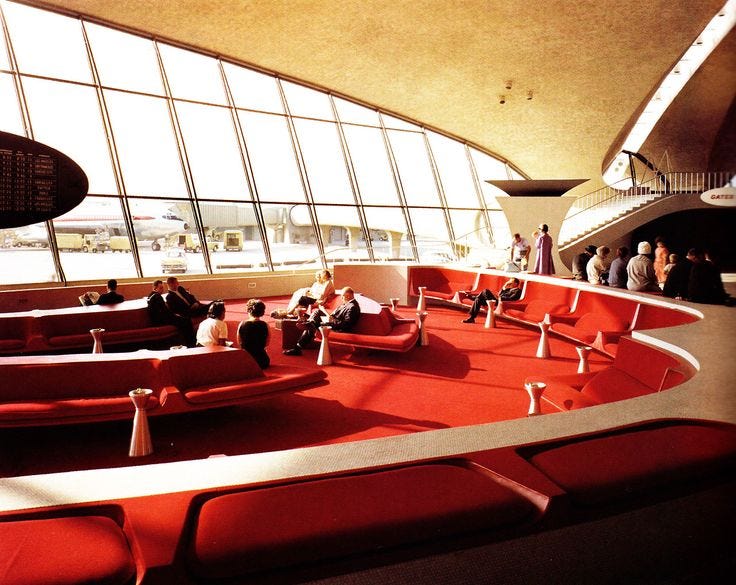What Makes A Design Timeless?
Part one of a three-part series, centered on Eero Saarinen's seminal TWA Terminal building, exploring nature of timeless design in the modern age.
What makes for a timeless design? Is it the form of the design? The style used? Or perhaps the materials? Calling a design timeless is a somewhat subjective endeavor, similar to trying to determine what ‘good’ art is these days. When I refer to a timeless design, I’m referring to the object or building’s ability to withstand the test or time—materially—but also aesthetically. A timeless design must also be impactful, and generate an emotional response from the user.
I want to point out that timelessness does not exclude style. There are plenty of highly stylized buildings in our society (think cathedrals, museums, etc) that are still able to comfortably live in our modern society. The success of a timeless design is, to an extent, based on the assumption that it does not seek to follow current stylistic conventions as a means to an end; hence, it will not age badly once the current style goes out of fashion. This is why cathedrals, built over multiple generations, have such staying power today: Their grandiosity and awe-inspiring nature (the purpose of the design) is supplemented by the often baroque stonework and colorful stained-glass—leading to a building that, although very stylized, can live on for hundreds of years into the future.
The world of modern architecture, compared to medieval cathedrals, is much, much younger and has yet to truly prove whether it can produce timeless works. Modernists would argue that the entire purpose of Modernism is to be the ultimate framework for timeless design; but that does not reflect reality. Modernism’s commitment to taking the metaphysical high ground (“These simplified forms are the most pure and therefore most correct”) above all that came before it is a big reason why we are currently stuck in a Post-Modern morass.
A quick aside.
The International Style, led by its architectural high priest, Mies Van De Rohe (and contemporaries in other artistic fields) established a Modernist orthodoxy so strong that it suffocated any genuine attempts for artistic-design continuity towards the end of the 20th century. As a result, Post-Modernism’s raison d'être was to undermine and eventually dismantle Modernism from the inside through incessant critique and self-examination. Tom Wolfe’s The Painted Word, published in 1975, does an excellent (and humorous) job showing how Modernist Art became an exercise in abstraction and Art theory—eventually turning into the Post-Modernist Art movement that we all know and love.


Post-Modernism spiraled out of control after it succeed in its mission to critique Modernism into irrelevancy. This is the morass we are in now—a self-criticizing and self-effacing artistic culture that cannot, will not, preserve something long enough for it to bloom and evolve into something that will establish a new standard.
With this small aside done with and having provided an overview of what makes for timeless design, I’d like to take us to May 28, 1962; the opening day of a building so iconic it has been copied endlessly, but who’s influence has yet to be diminished, even more than 50 years after being built.
As the subtitle of this article suggests, I am talking about Eero Saarinen’s Trans World Airlines Flight Center. This is a building that requires little introduction, as it stands among the most famous and well-received pieces of architecture created this past century. I’d like to dedicate most of today’s essay to explain why this building is a rare example of a modern, timeless design that should be referred by all who want to pursue artistic ambitions within a modern design framework—and ultimately exit the trappings of our Post-Modern world.
“As the passenger walked through the sequence of the building, we wanted him to be in a total environment where each part was the consequence of another and all belonged to the same form-world. It is our strong belief that only through such a consistency and such a consequential development can a building make its fullest impact and expression.”
— Eero Saarinen
Shaped like a bird taking flight, TWA Flight Center is the blueprint for modern sculptural architecture—but beyond that—it is a masterclass in corporate identity and humanistic design. TWA Flight Center is not a modern cathedral dedicated to the TWA brand (although it appears so), it is a building that expresses the experience of flight in the strongest aspirational terms possible.
This is a building like no other: entering it today feels like finding one’s self in an alternative timeline. Instead of rectangles of glass and concrete, Saarinen’s TWA is a flowing sculpture of white mosaic walls, red upholstery, and immense vaulted ceilings. To think Saarinen built this building in the heyday of the International Style underscores his genius and commitment to pursuing Design that transcended ideology and style.
Although TWA Flight Center was designed in the era of propeller airliners and quickly found itself lacking in facilities and space to accommodate modern jet airliners, it remained an icon, and for a time, became the blueprint for modern airport design. This was the result of Saarinen’s scientific, analytical method of understanding a user’s needs, whilst concocting an aesthetic vision that would generate the building’s long-lived aesthetic appeal.
As Cesar Pelli, one of Saarinen’s architects working on the Flight Center’s supporting columns, noted in a 2009 interview:
Keep reading with a 7-day free trial
Subscribe to Design In Reach to keep reading this post and get 7 days of free access to the full post archives.







